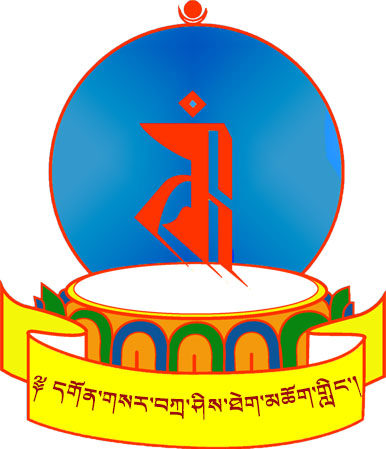About Tibetan Buddhism
An Outline of Tibetan Buddhism: History, schools and key concepts
By Geshe Thubten Jinpa
Historical Background
According to traditional Tibetan accounts Buddhist scriptures first came to the vast plateau of Tibet in the third century CE during the reign of the king Lha Thothori Nyentsen. Legend has it that this devout king received some Buddhist texts as gifts from India. As he was able to neither read them nor find anyone among his subjects able to do so, he placed them on his altar as objects of worship. One night he had a prophetic dream that indicated that the profound meaning of these scriptures would be revealed to his people after twelve generations.
Twelve generations later the famous Tibetan monarch Songtsen Gampo (7th century) appeared, universally recognized by Tibetan Buddhists as both a human incarnation of the Buddha of compassion and the country’s first Buddhist king. It was during his reign that Thömi Sambhotra (7th century) first developed the present system of Tibetan writing, based on an ancient Indian script. Thömi Sambhotra also undertook the first translations of Buddhists texts into Tibetan. Songtsen Gampo married a Nepalese princess and a Chinese princess and, according to tradition, it was due to their influence that he had the earliest Buddhist temples built in Tibet. Recent historical and archaeological scholarship has suggested however that there exists a close connection between the early history of Buddhism in Tibet and the Tibetan conquest of many regions of central Asia. At the height of its power during the eighth and ninth centuries CE, the Tibetan Empire extended from the northern part of China to the far corners of Central Asia.
Perhaps credit for the systematic establishment of Buddhism as Tibet’s state religion really belongs to the monarch Trisong Detsen (8th century), who was responsible for building Samye, the first Buddhist monastery in Tibet. Further, under his decree the Indian version of Mahayana Buddhism gained dominance over a version of Ch’an from China following the famous debate at Samye between the main proponents of the two rival traditions of Buddhism. Traditional Tibetan histories identify three key figures in the establishment of Buddhism in Tibet during that period. They were, in addition to the monarch Trisong Detsen, the Indian thinker Shantarakshita (circa 8th century) who introduced the Buddhist monastic system in Tibet, and the mystic Padmasambhava (circa 8th century) who, in addition to disseminating a large body of Vajrayana meditative practices, integrated many of the pre-Buddhist icons into the Tibetan Buddhist iconography.
In recognition of their great contribution to the flourishing of Buddhism in Tibet, these three personalities are often depicted together in religious paintings and referred to as the trio: the abbot, the master and the religious king. The establishment of Buddhism was further strengthened during the reign of the monarch Tri Ralpa- chen (9th century) when the Tibetan language was reformed and its philosophical and religious terminology standardized. However Buddhism in Tibet went into serious decline during the next 150 years following the death of Tri Ralpa-chen in about 838. It was only during the 11th century, following the arrival of the Indian Buddhist master Atisha in Tibet, that a full revitalization of Buddhism took place in the country. Today this later period is known as the time of the ‘second dissemination of Buddhism in Tibet.’
